Books That Have Used Me As a Source
These books used my books or magazine articles as source material. All descriptions are from Amazon.com unless otherwise noted.
These books used my books or magazine articles as source material. All descriptions are from Amazon.com unless otherwise noted.
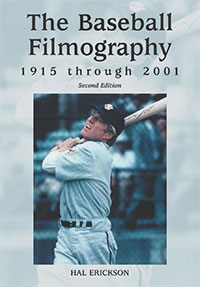
Since the first baseball movie (Little Sunset) in 1915, Hollywood has had an on-again, off-again affair with the sport, releasing more than 100 films through 2001. This is a filmography of those films. Each entry contains full cast and credits, a synopsis, and a critique of the movie. Behind-the-scenes and background information is included, and two sections cover baseball shorts and depictions of the game in non-baseball films. An extensive bibliography completes the work.
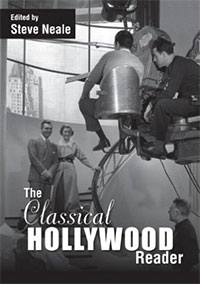
The Classical Hollywood Reader brings together essential readings to provide a history of Hollywood from the 1910s to the mid 1960s.

"A useful overview... [that] captures the technological, economic, and cultural sweep of an industry that influenced... what would become the Global Village." -- Bill Ruehlmann, The Virginian-Pilot "An extensive, readable... informative, well-written study... Recommended." -- CHOICE "A tour-de-force narrative of more than six decades of American television and its impact on U.S. society... An important contribution." -- Christopher H. Sterling, Communication Booknotes Quarterly "An excellent addition to any undergraduate library and also a nice addition to public libraries." -- Linda W. Hacker, American Reference Books Annual "A marvelous, detailed, and comprehensive narrative... This remarkable book, unquestionably one-of-a-kind, belongs in every reference library." -- Robert Fyne, Film & History "Positioned with the monumental works of Erik Barnouw, Asa Briggs, Christopher Sterling and John Kittross, Edgerton contributes a comprehensive study of American television's popular culture... The Columbia History of American Television should be on the shelf of every television historian and popular culture scholar, as well as the nonspecialist's." -- Donald G. Godfrey, Journal of Broadcasting and Electronic Media
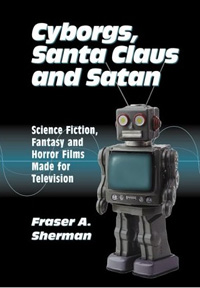
Since the first SF film produced for television--1968's Shadow on the Land--nearly 600 of the films initially released to television have had science fiction, fantasy, or horror themes. Featuring superheroes, monsters, time travel, magic, and other elements of their big screen counterparts, these films range from the phenomenal to the forgettable, from low-budget two-hour films to blockbuster mini-series. Some, like The Ewok Adventure, were based on theatrical releases, while others, like Babylon 5, have developed into very popular series. Information on all of these films released in America from 1968 through 1998 is collected here. Entries are arranged alphabetically and include cast and credits, a plot synopsis, and qualitative commentary, as well as notes on interesting points (e.g., future stars, salutes to other films). Appendices include a listing of films that, while not strictly genre movies, include some science fiction, horror, or fantasy elements; a chronology of the films; and a guide to alternate video or syndication titles.
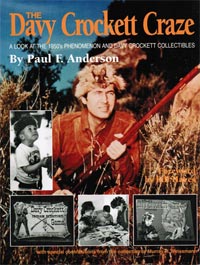
This book is the definitive work on the Disney version of Davy Crockett.
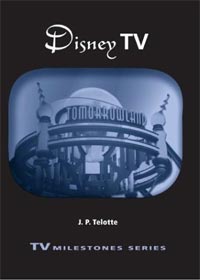
This year marks the 50th anniversary of the Walt Disney Company's network television series Disneyland/The Wonderful World of Color. The series, part of Walt Disney's quest to re-create American entertainment, premiered October 27, 1954 on ABC and was the longest-lived program in television history. Over the years, Walt Disney's visions have evolved into family-oriented cinema, television, theme parks. From the lovable Mickey Mouse and Donald Duck to magical places like Frontierland, Disneyland/The Wonderful World of Color generated some of the most popular fads of the era.
In Disneyland/The Wonderful World of Color, J. P. Telotte examines the history of the Disney television series while placing it in context—the film industry's reaction to television in the post-World War II era, the Disney Studios’ place in the American entertainment industry, and Walt Disney’s dream to create the modern theme park. Telotte’s guiding principle in this examination is to illustrate how Disney changed the relationship between cinema and television and, perhaps more importantly, how it affected American culture.
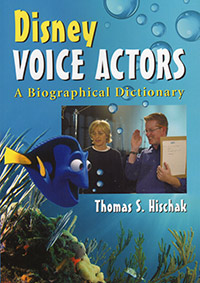
This biographical dictionary is devoted to the actors who provided voices for all the Disney animated theatrical shorts and features from the 1928 Mickey Mouse cartoon Steamboat Willie to the 2010 feature film Tangled. More than 900 men, women, and child actors from more than 300 films are covered, with biographical information, individual career summaries, and descriptions of the animated characters they have performed. Among those listed are Adriana Caselotti, of Snow White fame; Clarence Nash, the voice of Donald Duck; Sterling Holloway, best known for his vocal portrayal of Winnie the Pooh; and such show business luminaries as Bing Crosby, Bob Newhart, George Sanders, Dinah Shore, Jennifer Tilly and James Woods. In addition, a complete directory of animated Disney films enables the reader to cross-reference the actors with their characters.

In 1955 Walt Disney presented the world’s first theme park. Disneyland opened with just 18 rides and attractions. Today there are eleven Disney parks around the globe. Visitors can spend weeks at a time in these resorts, often staying in one of Disney’s own hotel rooms. But in the last fifty years the Disney Imagineers have designed thousands of rides, attractions, hotels, and even entire theme parks that have never been built. Many of these concepts have remained hidden in the company’s private archive for decades… until now. The Disneylands That Never Were documents the biggest, best and most outrageous of these abandoned plans. It details everything from Walt Disney’s initial ideas for Mickey Mouse Park to his planned ski resort in California. From small developments like The Disney Hotel in New York’s Times Square to the huge Port Disney concept, over five decades of dreams are brought to life in The Disneylands That Never Were. - lulu.com
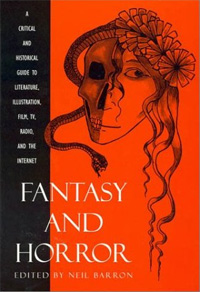
Using the same general format as his groundbreaking guide to science fiction, Anatomy of Wonder (Bowerk, 1995. 4th ed.), Barron and his colleagues guide the reader through the best primary and secondary literature in the two broad categories of fantasy and horror, written from 1762 to 1998. They provide extensive annotations and brief (one-paragraph) essays on each subtopic or item. In this enormous enterprise, Barron covers fiction, poetry, authors, media, the web, organizations, etc. Since the individual authors intermix fantasy and horror materials, the reader interested in only one genre is forced to scan through numerous citations in both genres to find relevant items. Separating the two within each chapter, whenever possible, would have made for easier access. Though this easily replaces all earlier broad genre guides, some genre separatists might be uncomfortable with the liberal intermix of fantasy, sf, Gothic, and horror. In fact, this remains two excellent reference books not quite comfortably rolled into one. Nonetheless, it is recommended for all public and academic collections.
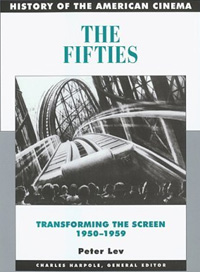
Completing the landmark, award-winning, ten-volume series on the first century of American film, The Fifties covers a particularly tumultuous period. Peter Lev explores the divorce of movie studios from their theater chains; the panic of the blacklist era; the explosive emergence of science fiction as the dominant genre (The Thing, The Day the Earth Stood Still, Forbidden Planet, War of the Worlds); the rise of television and Hollywood's response to the new medium, as seen in widescreen spectacles (The Robe, The Ten Commandments, Ben-Hur) and mature Westerns (High Noon, Shane, The Searchers). The richly detailed text elucidates a number of emerging trends as Hollywood, with its familiar stars and genres, reached out as an industry to the newly acknowledged "teenage" generation with rock and roll films, and movies as diverse as Rebel Without a Cause and Gidget.

Seen as a land of sunshine and opportunity, the Golden State was a mecca for the post-World War II generation, and dreams of the California good life came to dominate the imagination of many Americans in the 1950s and 1960s. Nowhere was this more evident than in the explosion of California youth images in popular culture. Disneyland, television shows such as The Mickey Mouse Club, Gidget and other beach movies, the music of the Beach Boys--all these broadcast nationwide a lifestyle of carefree, wholesome fun supposedly enjoyed by white, middle-class, suburban young people in California.
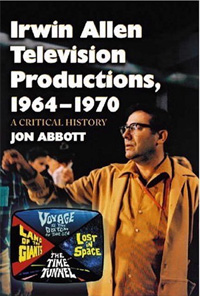
Before establishing himself as the “master of disaster” with the 1970s film hits The Poseidon Adventure and The Towering Inferno, Irwin Allen created four of television’s most exciting and enduring science-fiction series: Voyage to the Bottom of the Sea, Lost in Space, The Time Tunnel and Land of the Giants. Filmed within yards of each other on the busy and successful studio lots of 20th Century–Fox, these 1960s series were full of Allen’s favorite tricks and techniques. Sometimes adapted from earlier sources, sometimes devised by Allen and his award-winning special effects teams, those characteristic Allen touches have influenced other productions from the original Star Trek to shows of the present day. Every science-fiction show owes something to Allen, and yet none has equaled his series for pace, excitement, or originality. This book documents and examines in detail the premise and origin of each of the four shows and offers an objective evaluation of every episode. In this close-up look at these television landmarks, the author proves that when Irwin Allen’s television episodes were good, they were great—and when they were bad, they were still terrific fun.

One of the articles included extracts from my book on Disney television.

Knight Rider Legacy: The Unofficial Guide to the Knight Rider Universe by Joe Huth IV and Richie F. Levine is the ultimate guide to the creation and production of this cult classic. Contained within are extensive cast and crew interviews, a season-by-season episode guide loaded with trivia, details on each Knight Rider spin-off, and rare, never before published photos!
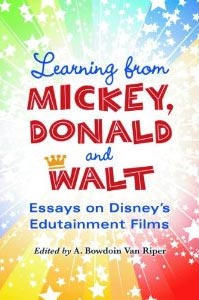
Throughout its long and colorful history, Walt Disney Studios has produced scores of films designed to educate moviegoers as well as entertain them. These productions range from the True-Life Adventures nature documentaries and such depictions of cutting-edge technology as Man in Space and Our Friend the Atom, to wartime propaganda shorts (Education for Death), public-health films (VD Attack Plan) and coverage of exotic cultures (The Ama Girls, Blue Men of Morocco). Even Disney's dramatic recreations of historical events (Ten Who Dared, Invincible) have had their share of educational value. Each of the essays in this volume focuses on a different type of Disney "edutainment" film. Together they provide the first comprehensive look at Walt Disney's ongoing mission to inform and enlighten his worldwide audience.
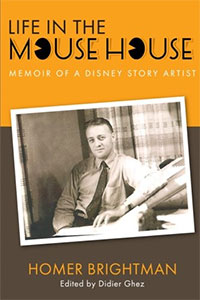
Homer Brightman first encountered Walt Disney in the men's room of the Disney Studio in 1935. Another employee had just complained about Walt, not knowing that Walt himself was standing at the next urinal, and by lunchtime that employee found himself on the street, and out of a job.
Over the next fifteen years, Brightman experienced the highs and lows of working for a driven, complex, sometimes ruthless businessman and creative genius, Walt Disney, a man that other Disney artists—but not Brightman—saw as a smiling "uncle" or as a caring, patient mentor. Brightman presents the good and the bad, as he experienced them firsthand, and lets you ponder the contradictions of Walt's character.

Imaginatively researched and strewn with surprising details, this engaging cultural history traces the rise of the consumerism that has become as integral to the celebration of Christmas in the United States as tinsel is to tree trimming. In it, Marling (As Seen on TV) examines every ancillary form of buying, from Christmas gift wrap (which didn't exist before decorated boxes appeared in the late 1870s, followed by mass production of brightly printed paper sheets in the 1920s) to the commercialization of winter greenery in the home (which began in the late 19th century). With a keen eye for cultural diversity (her sections on the construction of African-American Christmas festivities and consumer habits are especially illuminating) and a ready sense of irony, she pierces the sentimental myths surrounding this cultural institution. Ranging from articles in the 19th century magazine Godey's Ladies Book to a statistical analysis of who buys Christmas wrap and a look at the impact of Bing Crosby's recording of "White Christmas" on holiday celebrations, her study, well timed for the coming holidays, will satisfy academic readers as well as general ones.

"Telotte really shines! His passion for analyzing Disney artifacts animates each page. Descriptions are vivid and detailed; analyses are rigorous and insightful, while his engagement with case studies is exemplary. The Mouse Machine is an engaging and intelligent book for those interested in cultural studies, popular culture, media studies, film studies, mass communication, technology and society, American studies, and related fields." Eileen R. Meehan, author of Why TV Is Not Our Fault: Television Programming, Viewers, and Who's Really in Control "The Mouse Machine is a copious history of Disney's innovations and preoccupations; it makes clear just how consistently and significantly Uncle Walt used technology to gain an edge on the competition."

This book referenced "Chase," one of my early computer games.

Producing Animation is an invaluable resource for students, executives, artists, and live action producers who may dream about producing an animated project. From preparing a pitch through final release print, everything you need to know about producing animation is discussed. Reading it is almost as if you had a mentor to guide you through the complex and often frustrating process of producing animation. If you are planning a project, this is an item that should be added to your budget and it is likely that you will be able to save many multiples of its cost in no time.

Bonanza aired on NBC from September 12, 1959, to January 16, 1973, playing to 480,000,000 viewers in over 97 countries. It was the second longest running western series, surpassed only by Gunsmoke, and continues to provide wholesome entertainment to old and new fans via syndication. This book provides an in-depth chronicle of the series and its stars. A history of the show from its inception to the current made-for-television movies is provided, and an episode guide includes a synopsis of each show and lists such details as the main characters of each episode and the actors who portrayed them, the dates they stayed with the show, date and time of original broadcast, writer, director, producer, executive producer, and supporting cast. Also provided are character sketches for each of the major recurring characters, career biographies of Lorne Green, Pernell Roberts, Dan Blocker, and Michael Landon, brief biographical sketches of the supporting cast, a discography of recordings of the Bonanza theme and recordings of the four major stars, and information on Bonanza television movies.
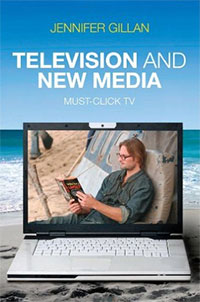
We watch TV on computers, phones, and other mobile devices; television is now online as much as it is "on air." Television and New Media introduces readers to the ways that new media technologies have transformed contemporary broadcast television production, scheduling, distribution, and reception practices. Drawing upon recent examples including Lost, 24, and Heroes, this book examines the ways that television programming has changed—transforming nearly every TV series into a franchise, whose on-air, online, and on-mobile elements are created simultaneously and held together through a combination of transmedia marketing and storytelling. Television studios strive to keep their audiences in constant interaction with elements of the show franchise in between airings not only to boost ratings, but also to move viewers through the different divisions of a media conglomerate.
Organized around key industrial terms—platforming, networking, tracking, timeshifting, placeshifting, schedule-shifting, micro-segmenting, and channel branding this book is essential for understanding how creative and industrial forces have worked together to transform the way we watch TV.
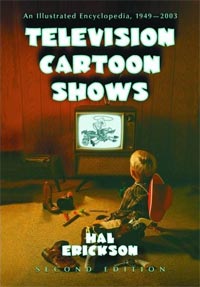
The encyclopedia covers all made-for-television cartoon series telecast in the U.S. between January 1, 1949, and December 31, 2003. Arranged alphabetically by title, entries provide network or cable affiliation, broadcast history, production and voice credits, synopsis, and often detailed commentary on characters, style, and the significance of the elements of each show. Entry length generally ranges from one-half page to nearly 10 pages for The Flintstones and its many derivatives. The historical essay in volume 1 covers 75 years of cartoons, starting with Disney's Steamboat Willie in 1928 (also the year that Radio Corporation of America began testing for long-range broadcasting on a television screen) up to the current landscape defined by improved production techniques, new FCC regulations regarding content, the growth of cable television, and the popularity of Japanese anime. Volume 2 concludes with an essay on cartoon voices, a selected bibliography, and an index to both volumes. The index provides access to programs, people, techniques, and organizations but not to cartoon characters, unless their names correspond to the titles of shows. We found a few errors; for example, the text contains a see reference from Heckle and Jeckle to CBS Cartoon Theatre, but there is no entry for the latter.
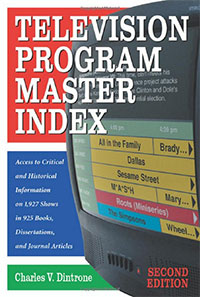
This updated and expanded edition of the highly acclaimed 1996 reference work ("unique"—Booklist/RBB; "absolutely invaluable"—ARBA; "comprehensive"—Rettig on Reference; "essential for historians"—The TV Collector) does researchers a great service by providing a single index to over 900 books and other materials that include information on almost 2,000 television shows. New to this edition are journal articles, books devoted to only one show, dissertations and websites where more information about a particular television show can be found. It also includes many new books covering more than one show that have been published since the first edition was released. Shows aired on the WB and UPN networks have been included, and several syndicated and cable shows have also been indexed. Most of the works indexed deal exclusively with television, though some autobiographies, biographies and memoirs of people who were influential in television, books about communication and the media, published Congressional hearings on such issues as television violence, and books geared toward fans are also indexed.
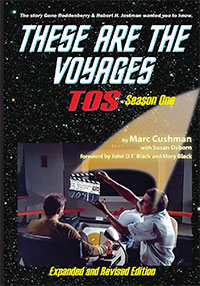
In the 1980s Gene Roddenberry and Robert H. Justman gave Marc Cushman permission to write the definitive history of the first Star Trek. They backed their stamp of approval by providing documentation never before shared with the public. These are the Voyages, published in three volumes - one designated for each season of TOS - will take you back in time and put you into the producers' offices, the writers' room, onto the soundstages, and in front of your TV sets for the first historic broadcasts. Included are hundreds of memos between Roddenberry and his staff, production schedules, budgets, fan letters, behind-the-scenes images, and the TV ratings, documenting the making of each episode of the "Classic 79" in staggering detail. Buckle your seat belts, the trek of a lifetime begins here.
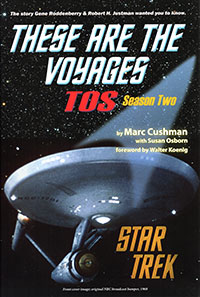
In the 1980s Gene Roddenberry and Robert H. Justman gave Marc Cushman permission to write the definitive history of the first Star Trek. They backed their stamp of approval by providing documentation never before shared with the public. These are the Voyages, published in three volumes - one designated for each season of TOS - will take you back in time and put you into the producers' offices, the writers' room, onto the soundstages, and in front of your TV sets for the first historic broadcasts. Included are hundreds of memos between Roddenberry and his staff, production schedules, budgets, fan letters, behind-the-scenes images, and the TV ratings, documenting the making of each episode of the "Classic 79" in staggering detail. Buckle your seat belts, the trek of a lifetime begins here.
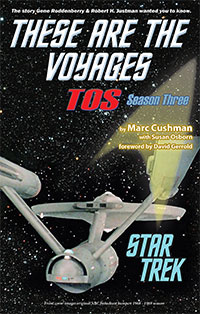
Marc Cushman's biography of Star Trek® the original series (TOS) takes you back in time for the final season of this iconic television show, to the production offices, the writers' room, onto the soundstages, and in front of your TV sets for what many thought would be Star Trek's final voyage. Included are hundreds of memos between Roddenberry, the producers and staff, production schedules, budgets, fan letters, behind-the-scene images, and the TV ratings. You'll find out the real reason Star Trek® was cancelled. So buckle your seat belts, this final trek gets really bumpy.

SO, YOU THOUGHT YOU KNEW EVERYTHING ABOUT SPACE: 1999? HOLD MY COMMLOCK …
The cult classic science fiction series Space: 1999 has legions of fans around the world and has been researched and documented in comprehensive books and documentaries, so fans can be forgiven for thinking there’s nothing new under the ‘Black Sun’ … But they’d be wrong.
With the success of Star Wars it was no surprise that others tried to capitalize on the new interest in science fiction. Veteran British producer Gerry Anderson, famous for series such as Thunderbirds, joined in with Space: 1999. The basic plot was that a massive nuclear explosion on the moon propelled it out of orbit and sent the crew of Moonbase Alpha off into uncharted space. I enjoyed the series and wrote about it in Starlog magazine.
This new book provides a fascinating look into how the show morphed from the initial first concepts into what we eventually saw on the air, and includes never before seen photos and correspondence. It also goes into the politics behind the production and other aspects about the show.
I enjoyed the book - and not just because my name pops up a few times.
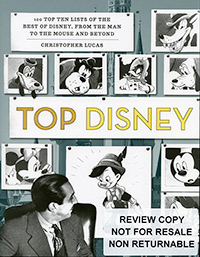
Long before David Letterman made it a nightly ritual, groupings of ten seemed to be the most common form of list making (commandments, amendments, FBI most wanted, etc.) Top 10 lists abound for everything today, from movies and music to sports and politics.
There is so much Disney history to cover, however, that it can’t be contained in one simple list, thus “The Top 100 Top Ten of Disney.”
There is not a person on Earth who hasn’t come into contact with Disney in some way. Whether seeing a Disney film, hearing a Disney song, recognizing a Disney character or visiting a Disney park, the company’s reach is global.
The Top 100 Top Ten of Disney will collect the best of the best of Disney in a book of lists. From Walt himself and the beginning of his company, to his successors who have broadened the reach of the Disney brand well beyond where even Walt could have imagined it, this book will cover every aspect of the 93 years of history that Disney has to offer. In it you will find information on everything from Oswald the Lucky Rabbit and Queen Elsa, to the billion dollar acquisitions of Marvel and Lucasfilm.
Written for casual and die-hard fans alike, The Top 100 Top Ten of Disney will revisit some familiar characters, films, songs, rides, and personalities associated with Disney but will also uncover some forgotten, obscure and overlooked parts of the company as well, such as the unlikely Disney films Victory Through Air Power (1943) and The Story of Menstruation (1946).
I am honored to have been included on one of the lists - “Experts on Walt Disney's Life.”

The Revised Vault of Walt consists of four parts, each with seven memorable tales about Walt, Disney films, Disney theme parks, and the many other worlds of Disney.
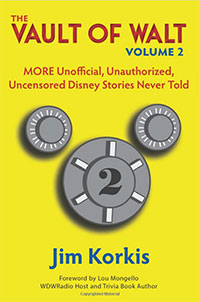
The Revised Vault of Walt consists of four parts, each with seven memorable tales about Walt, Disney films, Disney theme parks, and the many other worlds of Disney.
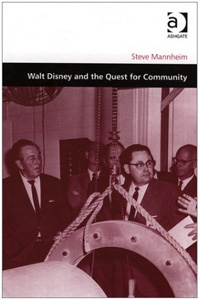
During the final months of his life, Walt Disney was consumed with the worldwide problems of cities. His development concept at the time of his death on 15th December 1966 would be his team's conceptual response to the ills of the inner cities and the sprawl of the megalopolis: the "Experimental Prototype Community of Tomorrow" or, as it became known, EPCOT. This volume focuses on the original concept of EPCOT, which was conceived by Disney as an experimental community of about 20,000 people on the Disney World property in central Florida. With its radial plan, 50-acre town centre enclosed by a dome, themed international shopping area, greenbelt, high density apartments, satellite communities, monorail and underground roads, the original EPCOT plan is reminiscent of post-war Stockholm and the British New Towns, as well as today's transit-oriented development theory. Unfortunately, Disney himself did not live long enough to witness the realization of his "model city". However, EPCOT's evolution into projects such as the EPCOT Centre and the town of Celebration displays a remarkable commitment by the Disney organization to the original EPCOT philosophy, one which continues to have relevance in the fields of planning and development.
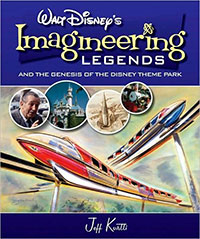
Walt Disney's Legends of Imagineering and the Genesis of the Disney Theme Park introduces a core group of the originators of Disneyland and the other Disney parks. It explores their individual relationships with Walt and each other, their creative breakthroughs and failures, and their rivalries and professional politics. This candid narrative of their lives and contributions to a very special form of entertainment illustrates why, half a century later, their work continues to be vital and important to millions of people every day, and all over the world.
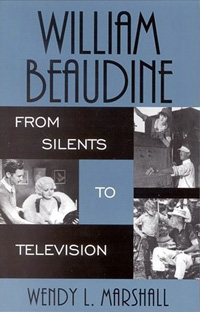
In his unsurpassed employment of 60 years in the business, Beaudine racked up more than 500 films and in excess of 350 television programs. Until his death at age 78, he was the oldest active director in the business. This detailed biography chronicles Beaudine's swift rise through the ranks, his triumph as one of the most successful directors of British comedies, his accumulation and loss of personal fortunes, his fall from fame, and his prolific work in television. Marshall corrects much misinformation that has been written about the director and has compiled the most complete list of his directorial credits to date.





